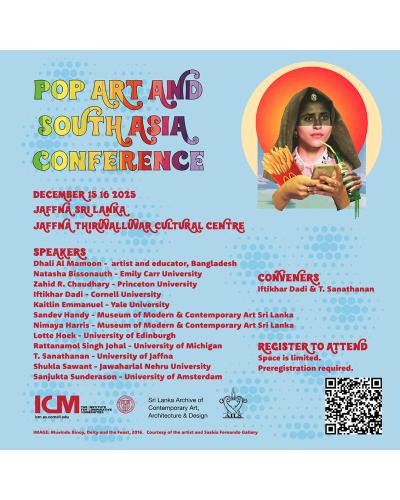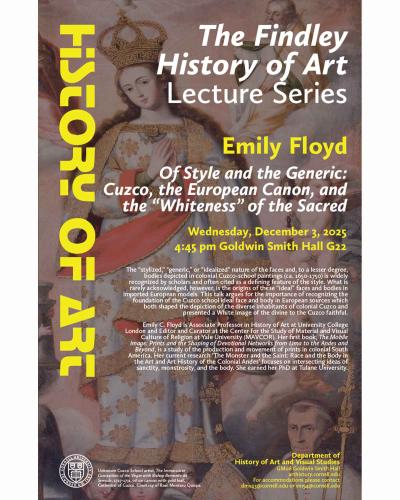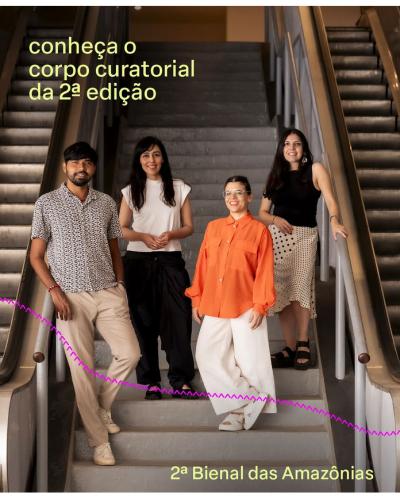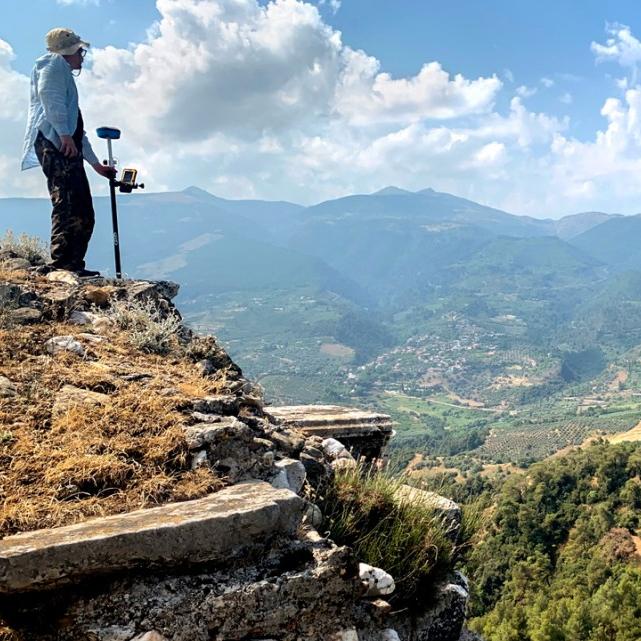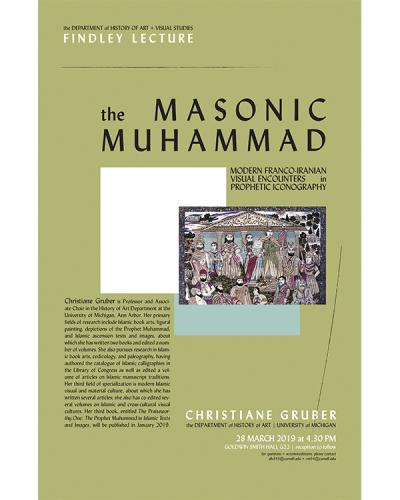The Masonic Muhammad:
Modern Franco-Iranian Visual Encounters in Prophetic Iconography
March 28, 2019 4:30 pm, reception to follow
Goldwin Smith Hall G22
Christiane Gruber is Professor and Associate Chair in the History of Art Department at the University of Michigan, Ann Arbor. Her primary fields of research include Islamic book arts, figural painting, depictions of the Prophet Muhammad, and Islamic ascension texts and images, about which she has written two books and edited a number of volumes. She also pursues research in Islamic book arts, codicology, and paleography, having authored the catalogue of Islamic calligraphies in the Library of Congress as well as edited a volume of articles on Islamic manuscript traditions. Her third field of specialization is modern Islamic visual and material culture, about which she has written several articles; she also has co-edited several volumes on Islamic and cross-cultural visual cultures. Her third book, entitled The Praiseworthy One: The Prophet Muhammad in Islamic Texts and Images, will be published in January 2019.
Talk Abstract:
While premodern Persian images most often represent the Prophet Muhammad as a bearded and mature adult embarked on his prophetic career, a notable corpus of images of the so-called “Young Muhammad” emerged in Iran during the early 20th century. In a number of paintings, postcards, posters, and even carpets, Muhammad is shown as an adolescent boy, at times standing and holding a banner. While some Persian texts identify the image as a Byzantine icon, this presentation will prove that its iconographic source is in fact a 19th-century European print. This print was adopted and adapted in Persian pictorial carpets of the “Great Men of the World,” which were produced in Kirman during the first two decades of the 20th century. These carpets provide heretofore unstudied evidence for the manner in which the Prophet was imagined and depicted in Iran at the height of the Constitutional Revolution. In addition, these Persian carpets most likely were used in Iranian Masonic lodges as well as in the private homes of revolutionary leaders who often were members of secret societies with close connections to French Freemasonry. Such modern Iranian images of the “Young Muhammad” thus must have reached Iran through international Masonic channels. Within these global revolutionary milieus, the Prophet joined the ranks of other eminent world leaders, in which his youth and vitality came to embody the French and Iranian revolutionary slogans of “Liberty, Equality, and Fraternity.” As a result, the Iranian urge to panegyrize and pantheonize the Prophet captures this highly dynamic moment in world history, in the process catalyzing a new heroic pictorial image of the Prophet that might be best called the “Masonic Muhammad.”

